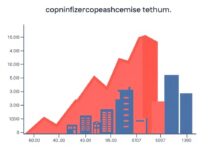How to calculate ROI on your investments

To ensure a robust return on your capital, apply the following formula: (Net Profit / Cost of Investment) x 100. This calculation provides insight into how effectively your resources are being utilized. A positive outcome indicates that your strategies are yielding beneficial results, while a negative one signals the need for reassessment.
Focus on gathering precise data regarding income and expenses associated with each venture. Tracking performance closely allows you to identify which areas are generating favorable returns and which require adjustments. Regular reviews will empower you to make informed decisions and shift resources toward more profitable opportunities.
In finance, understanding the relationship between risk and reward is paramount. Investments with higher potential returns often come with increased risk levels. Balancing these factors through diligent analysis helps in optimizing overall performance, ensuring that each dollar deployed works harder for you.
Understanding ROI Formula
To assess the performance of your assets, apply this straightforward formula:
Return on Investment (ROI) = (Net Profit / Cost of Investment) x 100%
This calculation transforms your net profit into a percentage, providing a clear view of financial returns relative to the initial cost. Follow these steps for accurate evaluation:
- Determine Net Profit: Subtract total expenses from total earnings generated by the investment.
- Identify Cost of Investment: Include all associated costs, such as purchase price, fees, and additional expenditures.
- Calculate Percentage: Use the formula mentioned above to convert your results into a percentage that reflects overall return.
For instance, if an asset generates $1,500 in earnings with $1,000 in costs, the calculation would be:
- Net Profit: $1,500 – $1,000 = $500
- ROI: ($500 / $1,000) x 100% = 50%
This indicates a 50% return on your financial commitment. Regularly applying this method allows you to compare various opportunities effectively and make informed decisions based on performance metrics. Always ensure that you account for all relevant factors to maintain accuracy in your assessments.
Identifying Relevant Costs
Focus on direct and indirect expenses that impact the overall performance of your financial endeavors. Begin by categorizing costs into fixed and variable components, ensuring a comprehensive understanding of the financial landscape.
A clear understanding of these costs enables precise calculations regarding returns. Ensure to also factor in transaction fees and taxes as they can significantly alter net gains. Regularly reassess these expenses to maintain optimal financial strategies and enhance overall profitability.
This analysis not only aids in refining fiscal strategies but also provides clarity in decision-making processes. By closely monitoring relevant costs, you can better gauge potential returns and adjust plans accordingly for maximum performance outcomes.
Estimating Expected Returns
To estimate expected returns accurately, focus on historical performance metrics as a foundational tool. Analyzing past returns over a significant period can provide insights into potential future gains. Utilize the average annual return percentage as a baseline for projections.
Incorporate a formula that adjusts these historical averages by factoring in market conditions and economic indicators. For example, consider including variables such as inflation rates, interest trends, and sector performance to refine your calculations.
Engage with financial models like the Capital Asset Pricing Model (CAPM) to assess risk-adjusted returns. This method helps quantify expected outcomes based on systematic risk, providing a more nuanced view of potential profitability.
Avoid relying solely on optimistic scenarios; instead, develop best-case and worst-case projections to understand the range of possible outcomes. This practice not only enhances decision-making but also prepares you for market volatility.
Lastly, regularly revisit and update your estimates as new data becomes available. Staying agile in response to changing financial landscapes will improve accuracy in forecasting potential returns significantly.
Comparing Different Investments
Assess the performance of various asset classes by analyzing their historical returns and associated risks. Stocks, bonds, real estate, and commodities each exhibit unique characteristics that influence potential gains.
Equities tend to offer higher long-term returns compared to other assets but come with increased volatility. Examine the average annual return over a decade, typically around 7-10%, depending on market conditions. Factor in economic cycles that can impact stock prices significantly.
Bonds, while generally less risky, yield lower returns. Government bonds may provide 2-4% annually, whereas corporate bonds could offer slightly higher rates based on credit risk. Analyze interest rate trends as they directly affect bond performance and pricing.
Real estate investments can deliver substantial returns through appreciation and rental income. Historically, real estate has appreciated at about 3-5% per year, though location and market dynamics play critical roles in determining actual gains. Evaluate property management costs against expected income to understand net returns.
Commodities, like gold or oil, often serve as hedges against inflation but can be unpredictable. Analyze their price movements relative to global economic indicators for better predictions of future performance.
Utilizing the right formula is key to making informed comparisons across these investment types. Ensure you account for all relevant costs and anticipated returns when assessing which option aligns best with your financial goals.
Always remember to diversify your portfolio by incorporating a mix of these assets to mitigate risk while optimizing overall return potential.
Analyzing Long-Term Trends
Examine historical performance data to uncover trends that can influence future returns. Focus on patterns over multiple years rather than short-term fluctuations. Identify sectors or asset classes that consistently outperform others, and quantify this performance in percentage terms to assess reliability.
Utilize moving averages as a tool for smoothing out price data, allowing you to visualize long-term trends more clearly. A simple moving average (SMA) calculated over 50 or 200 days often reveals underlying momentum shifts that might not be apparent in daily data.
Evaluate macroeconomic indicators such as interest rates, inflation rates, and GDP growth; these factors significantly impact investment returns over time. Correlate these indicators with asset performance to understand how external conditions drive market behavior.
Consider the impact of market cycles on your chosen assets. Analyze previous bull and bear markets, documenting how different investments reacted during these periods. This historical context can provide insights into potential future behavior and expected returns.
Incorporate fundamental analysis into your evaluation by examining companies’ financial health through key metrics like earnings per share (EPS), price-to-earnings (P/E) ratios, and return on equity (ROE). These figures help gauge the long-term viability of an investment.
Lastly, regularly review your findings and adjust your strategy accordingly. Continuous assessment is vital for maintaining optimal performance and aligning with changing market dynamics.






